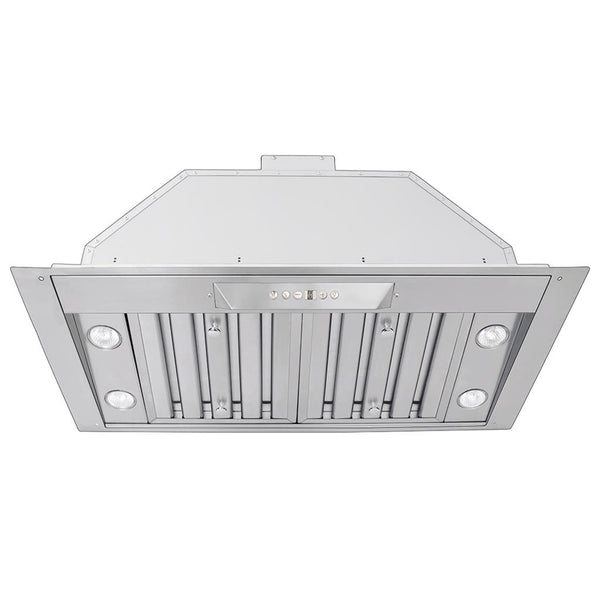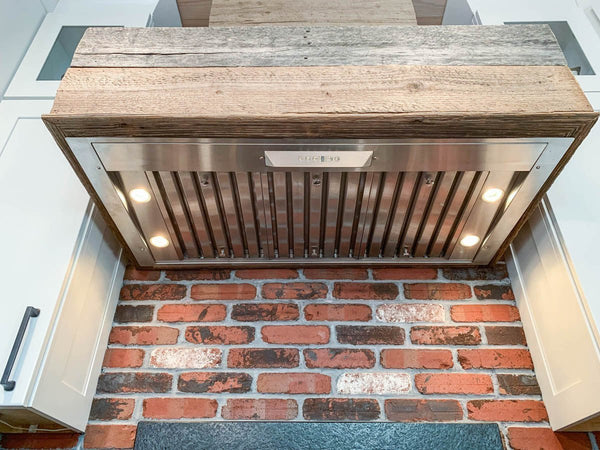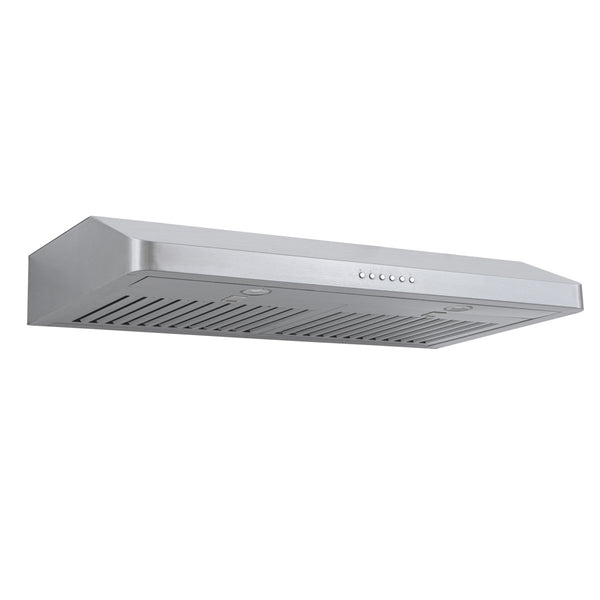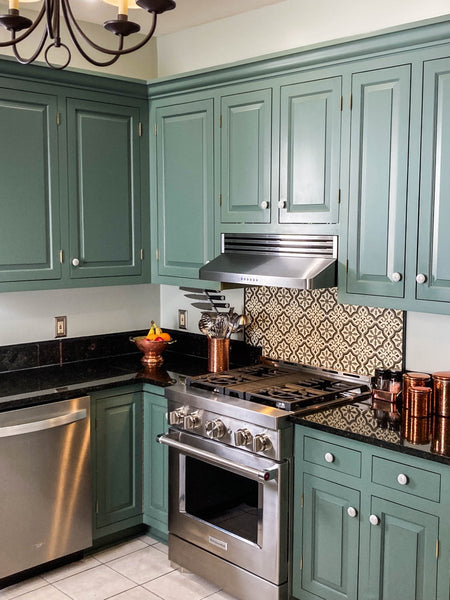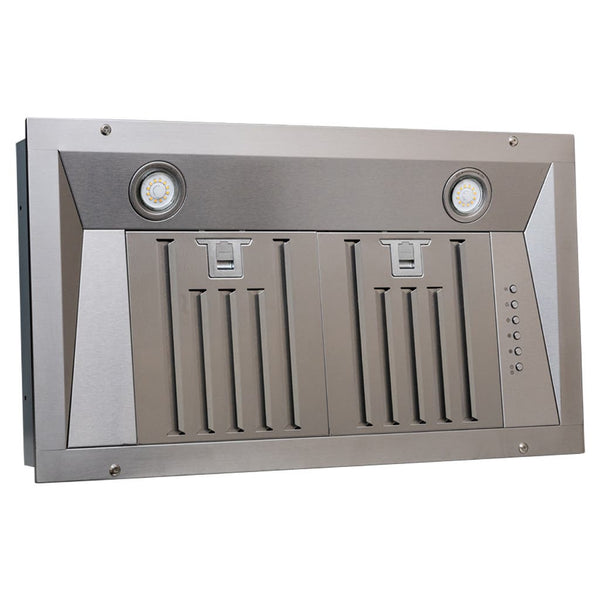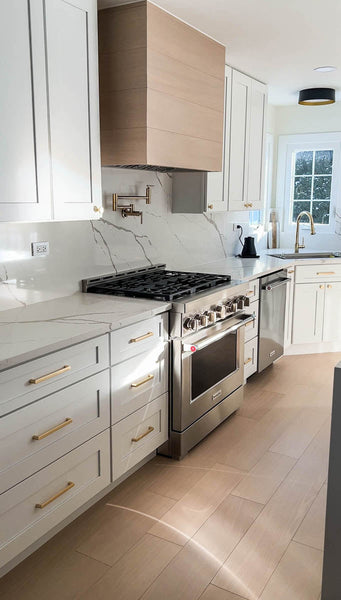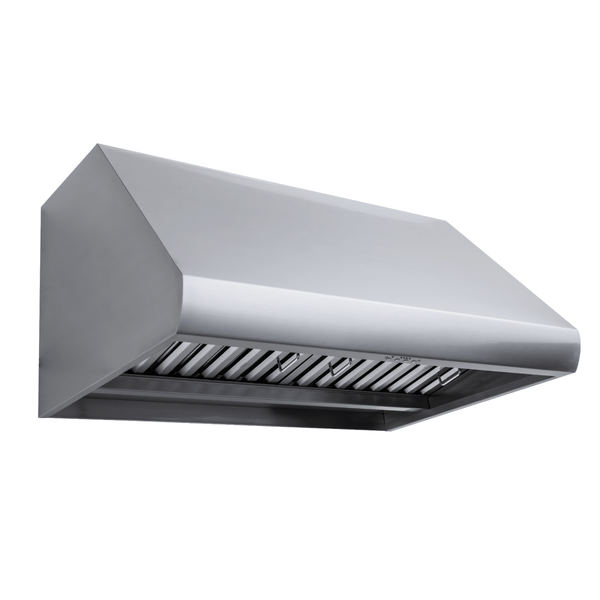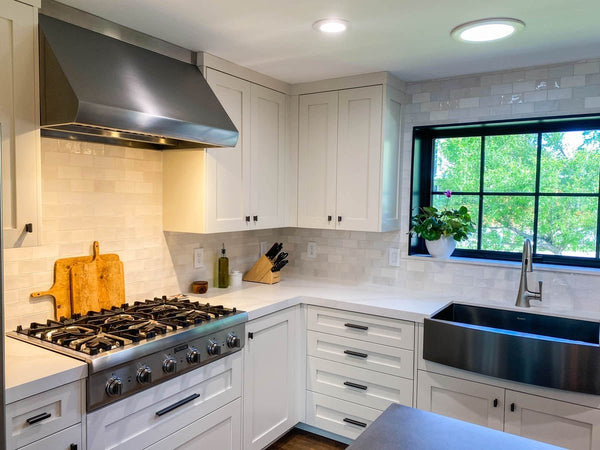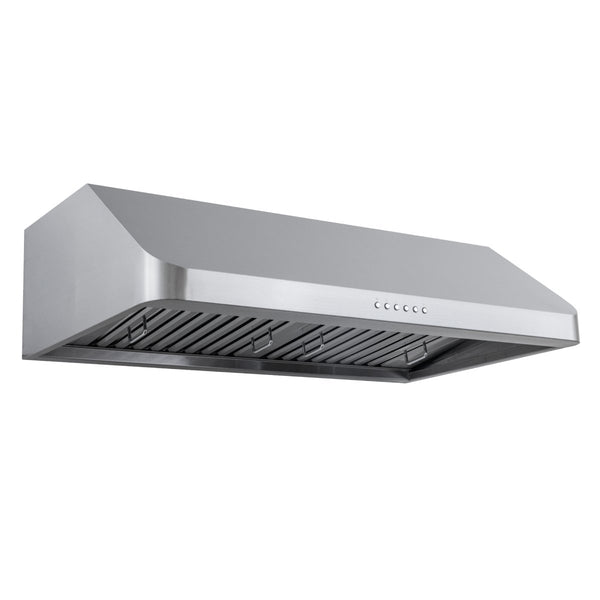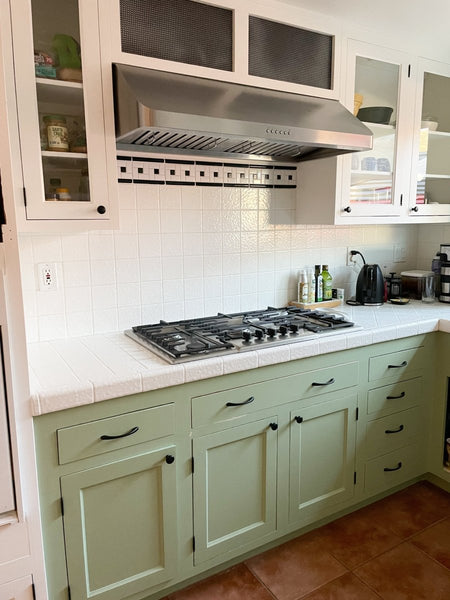Are you eager to break out your cast iron cookware? Or maybe you just bought a new skillet and want to start cooking!
You might be wondering: can you use cast iron on an electric stove?
The short answer is yes. Electric stoves take longer to heat up and cool down, so you may have to adjust your cook times. At high heat, you risk burning your food if you’re not careful. While gas and electric stoves can get quite hot, it’s much easier to control the temperature on a gas stove. Remember to turn on your wall mount range hood to help vent the fumes and odor.
Also, coil stoves heat unevenly compared to gas stoves. So it’s best to preheat your cast iron for five to 10 minutes before cooking. Otherwise, you may have cold or hot spots on your cast iron. They can cause it to crack or heat your food unevenly.
Over time, the heating element on your electric stove may wear out. It will take a long time to heat up. If you have an old electric stove, you should probably buy a new one before cooking with cast iron.
Here are 12 things to keep in mind when using cast iron on your electric stove.
When using cast iron on your electric stove…
Here are the basics on how to cook with cast iron on electric stove:
Match the size of the skillet with the size of the burner.
To heat cast iron evenly, don’t cook with a large pan on a small skillet. Otherwise, the middle of the pan will get quite hot while the edges will be much cooler. So your food will heat unevenly.
Preheat your cast iron for 5 to 10 minutes.
Cast iron does not conduct heat well. To ensure it cooks your food evenly, preheat your skillet for 5 to 10 minutes.
Don’t drag the pan across the stovetop.
Electric stovetops are prone to scratching, so make sure to lift the pan off the stovetop instead of dragging it.
Avoid using high heat for prolonged periods
Cast iron can retain heat for a long time, so be careful not to use high heat for prolonged periods, as this can cause your pan to overheat and potentially warp or crack. Instead, use low to medium heat and give your pan time to heat up gradually.
Season your cast iron properly
Proper seasoning is key to maintaining your cast iron's non-stick surface and preventing rust. Make sure to season your pan before using it on your electric stove, and re-season it periodically as needed.
Use the right utensils
Avoid using metal utensils on your cast iron, as these can scratch and damage the surface. Instead, use wooden or silicone utensils to prevent damage to your pan.
Clean your cast iron carefully
When cleaning your cast iron, avoid using soap or abrasive sponges, as these can strip away the seasoning and damage the surface. Instead, use hot water and a stiff brush to scrub away any food particles, and dry your pan thoroughly before storing it.
Once preheated, lower the heat.
If you keep the heat high after preheating, you could burn your food. Electric stoves take a long time to cool down. There’s quite a delay between turning the knob on your stove and seeing a change in temperature.
Adjust your cook times accordingly.
Electric stoves take a while to heat up. So you’ll either need to preheat your stove or add a few minutes to the cooking time.
But you don’t typically need to adjust cook times on a gas stove. A gas stove provides instant heat. When you are done cooking, you turn the burner off and the flame disappears.
Be careful working with high heat – it’s difficult to control.
It’s easy to burn your food on an electric stove. Although the coils take a while to heat up, the temperature can get out of hand once the coils get hot.
When adjusting the heat, it takes time for the change in temperature to take effect. So you can easily crank up the heat too high. Or, you might expect that decreasing the temperature will keep your food from burning. But that’s not the case.
Remember that your food will cook a little faster compared to cooking on a gas stove.
Electric stoves are much more energy-efficient than gas. While, with a gas stove, much of the heat escapes around the sides of the pan, less heat escapes from a coil stove.
Research has shown that induction stoves are most energy-efficient and gas stoves are the least energy efficient.
With an induction stove, about 90% of the heat transfers to the food. With an electric stove, 74% of the heat transfers to the food. And, with a gas stove, only 40% transfers to the food.
Don’t drop it.
Electric glass top stoves are quite fragile. Cast iron is heavy so even a drop from a few inches can damage your stovetop. Not to mention that you could crack your cast iron too. Handle your cast iron carefully!
Keep in mind that every electric stove is different.
Each stove has different wattage and power levels. So if you’re replacing your current electric stove, it may not work exactly the same. You’ll need to do some trial and error to figure out the temperature of the low, medium, and high settings.
Remove your food from heat after it’s cooked.
Electric stoves take a while to cool down. It’s not enough to turn the heat off or turn it down. You have to remove your pan from the stove entirely. Otherwise, you could burn your food. Keep in mind that often the stove won’t look hot. But it is!
Use the stove on low heat.
A gas stove can go out at low temperatures but an electric stove provides a consistent source of heat.
The power of the low setting will depend on the model, so it’s important to learn about your stove before cooking. Consult the owner’s manual or product page for the wattage.
Don’t put cast iron on a hot burner.
An easy way to ruin your pan is to set a cold or room temperature pan on a hot burner. Instead, let the pan warm up slowly as the stovetop heats up. This way, you’ll avoid warping your cast iron.
Which is hotter – a gas or electric range?
You might think that a gas stove is hotter than an electric stove. But that’s not always true. On gas stoves, much of the heat escapes up the sides of your pan. Whereas the entire electric coil on your stove makes contact with the bottom of your pan.
Once electric ranges heat up, they retain their temperature and can get incredibly hot. In fact, it’s much easier to burn your food on an electric stove than a gas stove. An electric stove will take several minutes to cool down, whereas a gas stove cools instantly after you turn off the heat.
Does an electric stove heat unevenly?
Yes, electric stoves typically heat unevenly, especially compared to gas stoves. To combat this, you can 1) preheat your pan for 5 - 10 minutes or 2) replace the heating element. In most cases, you only need to replace the heating element on old stoves.
Can you use enameled cast iron on an electric stove?
Yes, it is safe to use enameled cast iron on an electric stove. Enameled cast iron is incredibly durable and does not require seasoning. Preheat the stove for about 10 minutes before cooking and watch it closely so you don’t burn your food.
That’s it for our article “Can you use cast iron on an electric stove?” You can totally use cast iron on electric stove. Be aware that it’s hard to control the temperature, though. Also, don’t drag the pan on the stove top on glass stoves. And of course, try not to drop it!
Now go cook some delicious food! Or if you’d like to learn more about cooking with cast iron, check out the articles below.
Related Articles
How to Season a Cast Iron Skillet (Complete Guide)
9 Cast Iron Myths Debunked (Infographic!)
Complete History of Cast Iron (Infographic)
Which is hotter – a gas or electric range?
Once electric ranges heat up, they retain their temperature and can get incredibly hot. In fact, it’s much easier to burn your food on an electric stove than a gas stove. An electric stove will take several minutes to cool down, whereas a gas stove cools instantly after you turn off the heat.
